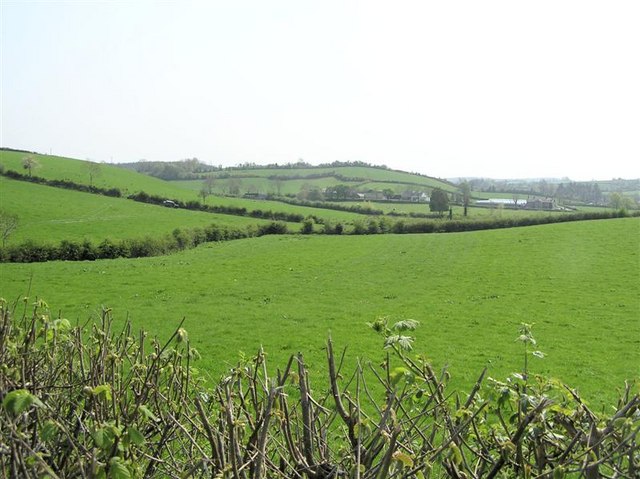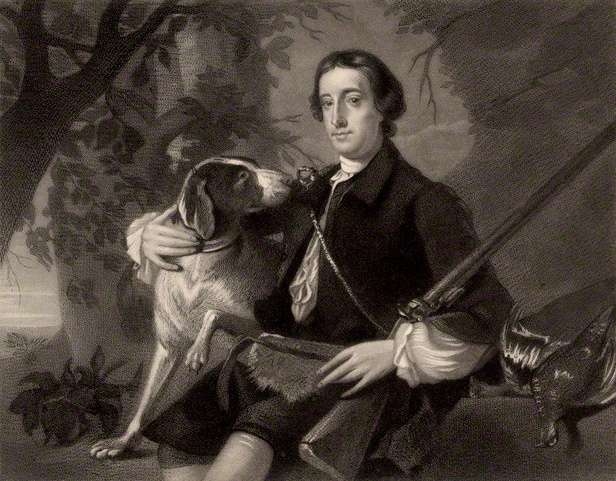|
Custos Rotulorum Of County Monaghan ...
The Custos Rotulorum of County Monaghan was the highest civil officer in County Monaghan. The position was later combined with that of Lord Lieutenant of Monaghan. Incumbents *1656–?1670 Richard Blayney, 4th Baron Blayney *1761–1775 Cadwallader Blayney, 9th Baron BlayneyThe Complete Peerage of England, Scotland, Ireland, Great Britain and the United Kingdom, Extant, Extinct or Dormant *1775–1805 William Henry Fortescue, 1st Earl of Clermont *1805–1842 Warner Westenra, 2nd Baron Rossmore For later custodes rotulorum, see Lord Lieutenant of Monaghan References {{Custodes Rotulorum Monaghan Monaghan ( ; ) is the county town of County Monaghan, Republic of Ireland, Ireland. It also provides the name of its Civil parishes in Ireland, civil parish and Monaghan (barony), barony. The population of the town as of the 2016 census was 7 ... [...More Info...] [...Related Items...] OR: [Wikipedia] [Google] [Baidu] |
County Monaghan
County Monaghan ( ; ga, Contae Mhuineacháin) is a county in Ireland. It is in the province of Ulster and is part of Border strategic planning area of the Northern and Western Region. It is named after the town of Monaghan. Monaghan County Council is the local authority for the county. The population of the county was 61,386 according to the 2016 census. The county has existed since 1585 when the Mac Mathghamhna rulers of Airgíalla agreed to join the Kingdom of Ireland. Following the 20th-century Irish War of Independence and the signing of the Anglo-Irish Treaty, Monaghan was one of three Ulster counties to join the Irish Free State rather than Northern Ireland. Geography and subdivisions County Monaghan is the fifth smallest of the Republic's 26 counties by area, and the fourth smallest by population. It is the smallest of Ulster's nine counties in terms of population. Baronies * Cremorne ( ga, Críoch Mhúrn) * Dartree ( ga, Dartraighe) * Farney ( ga, Fearn ... [...More Info...] [...Related Items...] OR: [Wikipedia] [Google] [Baidu] |
Lord Lieutenant Of Monaghan
This is a list of people who have served as Lord Lieutenant of County Monaghan. There were lieutenants of counties in Ireland until the reign of James II, when they were renamed governors. The office of Lord Lieutenant was recreated on 23 August 1831. Governors * Edward Blayney, 1st Baron Blayney 1604– (died 1629) * Cadwallader Blayney, 7th Baron Blayney c.1713– * Charles Talbot Blayney, 8th Baron Blayney c.1735– * William Fortescue, 1st Earl of Clermont: Beatson's ''Political Index'' (1806) vol. IIIp. 373 1775–1806 * Warner Westenra, 2nd Baron Rossmore: –1831''The Royal Kalendar'' for 1831p. 389 * Charles Powell Leslie: 1802–1831Stephen FarrellLESLIE, Charles Powell (?1767-1831), of Glasslough, co. Monaghan.in '' The History of Parliament: the House of Commons 1820-1832'' (2009). Lord Lieutenants * The 2nd Baron Rossmore: 7 October 1831 – 1836 * The 3rd Baron Rossmore: 13 June 1836 – 6 December 1858 * Charles Powell Leslie: 1858 – 26 June 1871 * The 1 ... [...More Info...] [...Related Items...] OR: [Wikipedia] [Google] [Baidu] |
Richard Blayney, 4th Baron Blayney
Richard Blayney, 4th Baron Blayney (died 1670) was an Anglo-Irish politician and official. Blayney was the third son of Henry Blayney, 2nd Baron Blayney and Jane Moore. In 1656, he was appointed Custos Rotulorum of County Monaghan by Oliver Cromwell, and that year also took his seat in the Second Protectorate Parliament as the Member of Parliament for Cavan, Fermanagh and Monaghan. On 9 February 1759, he was appointed Escheator of Ulster by Richard Cromwell. Following the Stuart Restoration, Blayney was elected as the representative for County Monaghan in the Irish House of Commons, serving between 1661 and 1666. In 1669, he inherited his elder brother's peerage as Baron Blayney Lord Blayney, Baron of Monaghan, in the County of Monaghan, was a title in the Peerage of Ireland. It was created in 1621 for the soldier Sir Edward Blayney. He was succeeded by his son, the second Baron. He was killed at the Battle of Benburb ...; he died the following year. References {{ ... [...More Info...] [...Related Items...] OR: [Wikipedia] [Google] [Baidu] |
Cadwallader Blayney, 9th Baron Blayney
Lord Blayney, Baron of Monaghan, in the County of Monaghan, was a title in the Peerage of Ireland. It was created in 1621 for the soldier Sir Edward Blayney. He was succeeded by his son, the second Baron. He was killed at the Battle of Benburb in 1646. His younger son, the fourth Baron (who succeeded his elder brother), represented County Monaghan in the Irish House of Commons. His elder son, the fifth Baron, was attainted by the Parliament of James II for supporting William of Orange. He had no sons and was succeeded by his younger brother, the sixth Baron. He was Governor of County Monaghan. His son, the seventh Baron, was Lord Lieutenant of County Monaghan. He was succeeded by his elder son, the eighth Baron. He was a clergyman and served as Dean of Killaloe. He had no surviving children and was succeeded by his younger brother, the ninth Baron. He was a Lieutenant-General in the Army. His younger son, the eleventh Baron (who succeeded his elder brother), was also a Lieutena ... [...More Info...] [...Related Items...] OR: [Wikipedia] [Google] [Baidu] |
William Henry Fortescue, 1st Earl Of Clermont
William Henry Fortescue, 1st Earl of Clermont, KP (5 August 1722 – 30 September 1806), was an Irish peer and politician. Origins He was the eldest son of Thomas Fortescue (1683–1769), a Member of Parliament for Dundalk. His younger brother was James Fortescue, MP and Privy Counsellor. Career He served as High Sheriff of Louth in 1746. He represented Louth in the Irish House of Commons from 1745 to 1760 and subsequently Monaghan Borough from 1761 to 1770. In 1768 he sat briefly as Member of Parliament for Dundalk before opting to sit for Monaghan Borough, for which he had also been elected. He was appointed Governor and Custos Rotulorum of County Monaghan for life in 1775, standing down just before his death in 1806. He was created Earl of Clermont in 1777 and a Knight Founder of the Order of St Patrick on 30 March 1795. He was a francophile and it is believed on that account he selected ''Clermont'' as the name of his earldom.''44 Berkeley Square'', A Commentary by ... [...More Info...] [...Related Items...] OR: [Wikipedia] [Google] [Baidu] |
Warner Westenra, 2nd Baron Rossmore
Warner William Westenra, 2nd Baron Rossmore (14 October 1765 – 10 August 1842), was an Anglo-Irish landowner and politician. Background and education Westenra was the son of Henry Westenra, Member of Parliament for County Monaghan, by Harriet Murray, daughter of Colonel John Murray, also Member of Parliament for County Monaghan. He was educated at Trinity College Dublin. Public life Westenra was returned to the Irish House of Commons for County Monaghan in August 1800, a seat he held until December of that year, when the Irish Parliament was abolished. He then represented the newly created constituency County Monaghan in the British Parliament until 1801, when he succeeded his maternal aunt's husband General Robert Cuninghame, 1st Baron Rossmore, as 2nd Baron Rossmore according to a special remainder in the letters patent. This was an Irish peerage and did not entitle him to an automatic seat in the House of Lords, although he was forced to resign from his seat in the Hou ... [...More Info...] [...Related Items...] OR: [Wikipedia] [Google] [Baidu] |
Custos Rotulorum
''Custos rotulorum'' (; plural: ''custodes rotulorum''; Latin for "keeper of the rolls", ) is a civic post that is recognised in the United Kingdom (except Scotland) and in Jamaica. England, Wales and Northern Ireland The ''custos rotulorum'' is the keeper of an English, Welsh and Northern Irish county's records and, by virtue of that office, the highest civil officer in the county. The position is now largely ceremonial. The appointment lay with the Lord Chancellor until 1545, but is now exercised by the Crown, under the Royal sign-manual, and is usually held by a person of rank. The appointment has been united with that of the lord-lieutenancy of the county throughout England since 1836. The ''custos rotulorum'' of Lancashire was formerly appointed by the Chancellor of the Duchy of Lancaster, and that of County Durham vested in the Bishop of Durham until the abolition of its palatine rights. Traditionally, he was one of the justices of the peace. The custos rotuloru ... [...More Info...] [...Related Items...] OR: [Wikipedia] [Google] [Baidu] |

